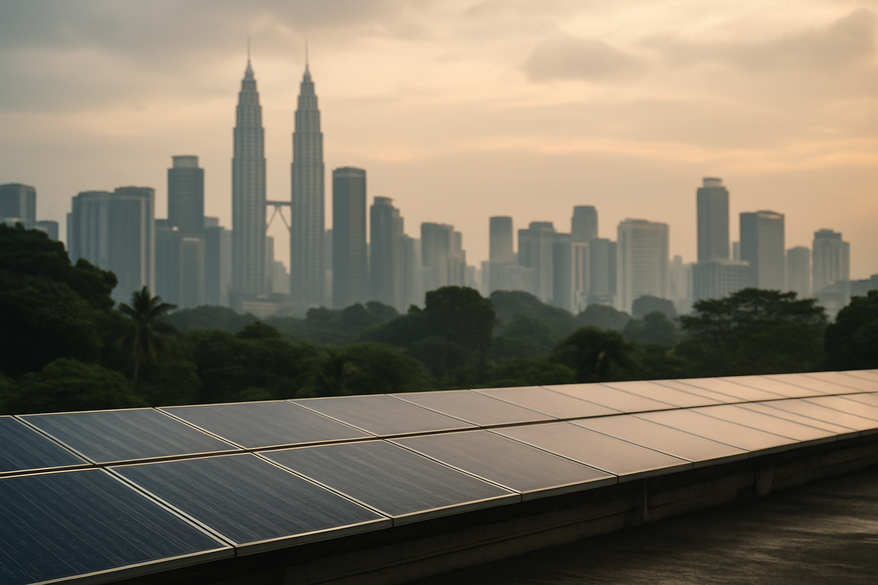Assessing Petronas' Net Zero 2050 Commitment: Practical Implications for Malaysian Oil & Gas Suppliers
As a Malaysian oil and gas equipment manufacturer, Teknologam watches Petronas' net-zero plans closely. The company’s pathway will shape demand for equipment, retrofits, and new technology locally. This piece reviews Petronas’ commitments and highlights supplier responses that align with our capabilities and market reality.
Key Takeaways:
- Petronas’ pivot to decarbonisation will reallocate capital toward CCUS, hydrogen, and low‑carbon operations.
- Technical requirements will favour modular, high‑integrity equipment and measurement solutions for emissions tracking.
- Suppliers that adapt now will capture retrofit and new‑build opportunities while helping deliver net‑zero targets.
Why Petronas’ Net Zero 2050 Matters for the Supply Chain
Petronas sits at the center of Malaysia’s energy transition. Its ambitions influence local projects, domestic regulations, and investor sentiment. International alignment with the Paris Agreement’s net‑zero-by‑2050 expectation increases scrutiny on emissions reporting and lifecycle carbon.
- Increased demand for measurement, control, and leak‑detection systems
- Higher uptake of electrification and heat‑integration technologies
- New contracting models emphasizing performance and scope 1–3 emissions
"We see Petronas’ roadmap as a trigger for equipment standardisation and more rigorous emissions monitoring across Malaysian facilities."
For context on Petronas’ public announcement and direction, see reporting on Petronas’ net‑zero intentions: Reuters coverage of Petronas' 2020 net‑zero announcement.
Technical priorities in the roadmap: CCUS, hydrogen, and efficiency
Petronas highlights carbon capture, utilisation and storage (CCUS), hydrogen, and energy‑efficiency projects. These areas require specialised pressure vessels, CO2 compression units, high‑integrity pipelines, and modular skid systems. Suppliers must meet tighter material specifications and verification regimes.
Key Insight: Early alignment with CCUS and hydrogen engineering standards creates long‑term contracting advantages.
For reference on CCUS technologies and deployment considerations, see the IEA’s overview: IEA – Carbon capture, utilisation and storage (CCUS).
Petronas’ public materials, including a net‑zero PDF and sectoral charts, provide baseline timelines and pilot locations. We recommend suppliers review those documents to prioritise capability investments and certification pathways.
Commercial considerations and the balance sheet
Petronas’ scale and capital capacity influence project sizing and procurement cadence. A large balance sheet supports multi‑phase pilots, but the company also seeks partnerships and shared‑risk models for capital‑intensive CCUS deployments. This dynamic opens opportunities for suppliers to propose performance‑based contracts.
- Expect more long‑term service agreements tied to emissions‑reduction targets.
- Consider financing partnerships to de‑risk early‑stage deployments for clients.
- Prepare to demonstrate lifecycle cost and carbon benefits of proposed solutions.
The operational "map" — where projects will locate and what that means
Petronas has signalled hubs for low‑carbon projects in Peninsular Malaysia and offshore. The public project map helps anticipate logistics, fabrication needs, and onsite assembly challenges. Local content rules will continue to influence procurement decisions.
- Offshore platforms will need modular, transportable systems.
- Onshore hubs will concentrate fabrication and commissioning services.
- Regional supply clusters can shorten lead times and reduce carbon from logistics.
"Mapping project geography allows us to optimise production runs, stock common spares, and propose regional service hubs."
Operational readiness: quality, testing, and emissions verification
Delivering net zero requires both hardware and measurement confidence. Clients will demand robust testing regimes, third‑party verification, and digital reporting. Suppliers must integrate sensors, higher‑fidelity metering, and interoperability with clients’ digital platforms.
Key Insight: Investing in digital enablement for emissions verification differentiates manufacturers in tender evaluations.
The review materials emphasise transparency. We should align product data sheets, FAT procedures, and certificates with those expectations to reduce procurement barriers.
How Teknologam can respond — practical steps
We must prioritise capacity building in three areas: material and welding standards for CO2 and H2 service, skid‑based modularity for hydrogen, and sensor integration for emissions monitoring. Partnering with research institutes will accelerate certification and testing.
- Upskill welders and NDT teams to meet CO2 and H2 service criteria.
- Develop modular skid prototypes to demonstrate fast deployment.
- Integrate IoT‑enabled metering into standard product lines for emissions reporting.
"By pivoting early, we reduce retrofit complexity and secure a pipeline of retrofit and new‑build orders."
Conclusion: strategic posture for an evolving market
Petronas’ net‑zero pathway aligns with global expectations and reshapes domestic project flows. Suppliers that translate technical readiness into measurable emissions outcomes will lead procurement lists. We will continue monitoring Petronas’ releases and the public project map to refine our business development and engineering priorities.
If you want, we can prepare a supplier capability brief focused on CCUS and hydrogen skids tailored to upcoming Petronas tenders.
